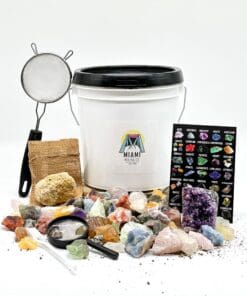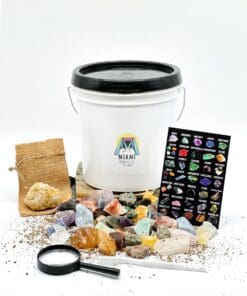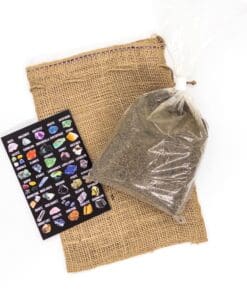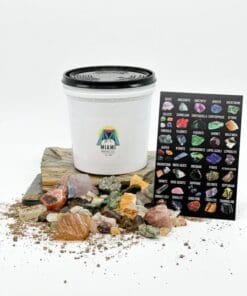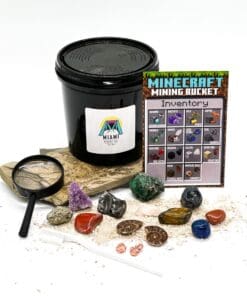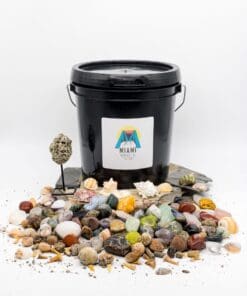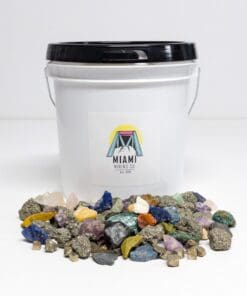Gem Mining Connecticut’s Hidden Gems: Unearthing Treasures
Connecticut, with its rich geologic history, offers a unique blend of gem mining opportunities that appeal to both amateur and seasoned prospectors. Nestled in the heart of New England, this state promises hidden treasures and delightful experiences for those who take the time to explore its mineralogical wealth. This article sheds light on the abundant gemstones, the best places to find them, the history of mining, and much more to make your gem-hunting experience unforgettable.
The Most Popular Gemstones in Connecticut
Connecticut’s geology presents a range of both common and rare gemstones, making it a haven for enthusiasts and collectors alike. Below are two lists that catalog the state’s mineralogical wonders.
Rare Gemstones in Connecticut:
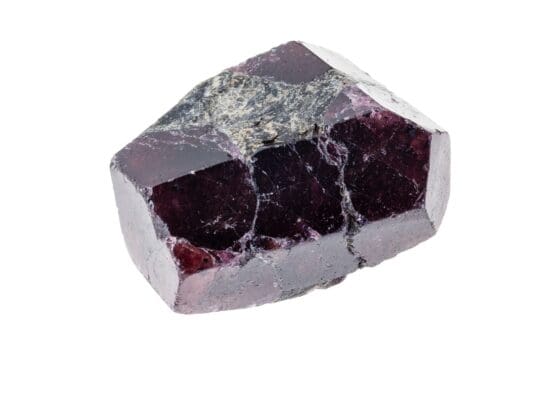
| Gemstone | Description |
|---|---|
| Almandine Garnet | Often deep red or reddish-brown, this form of garnet is a prized gemstone due to its exquisite color and clarity. |
| Watermelon Tourmaline | A unique type of tourmaline that exhibits pink, green, and white colors in a single crystal, resembling the cross-section of a watermelon. |
| Blue Beryl (Aquamarine) | A light blue to greenish-blue variety of beryl. Though not as abundant in Connecticut as other types, when found, they’re a delight. |
| Rose Quartz | A pink variety of quartz, its delicate color makes it highly sought after. Though rare, some sites in Connecticut yield this gem. |
| Green Diopside | A lesser-known gemstone, diopside in its green form is quite rare in Connecticut and holds significant collector value. |
Common Gemstones in Connecticut:
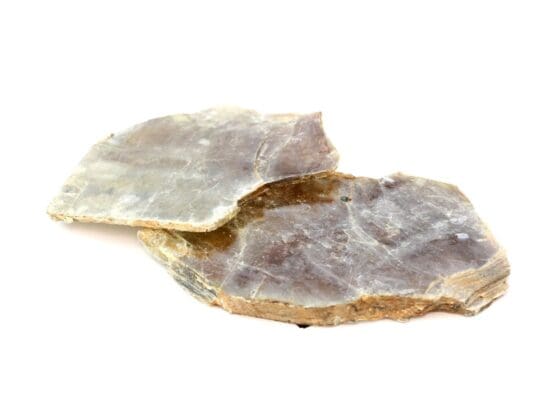
| Gemstone | Description |
|---|---|
| Quartz | Connecticut has a variety of quartz, ranging from clear to smoky, and even the famous Herkimer-like diamonds. |
| Mica | While not a gemstone in the traditional sense, sheets of mica are often unearthed and are of interest to many collectors. |
| Biotite | A common black or brown mica mineral that can be found in numerous rock formations throughout Connecticut. |
| Feldspar | Ranging in colors, this mineral is quite abundant in Connecticut and forms the matrix in which many other gemstones are found. |
| Black Tourmaline (Schorl) | Frequently encountered in Connecticut’s mines, it’s known for its dark hue and crystalline structures. |
| Green Beryl | While the blue variant is rare, green beryl is relatively more common in Connecticut. |
| Magnetite | This magnetic mineral, often found in its black crystalline form, is a frequent discovery in certain regions. |
| Talc | Often found in soft, greenish or whitish masses, talc is another mineral that gem hunters might come across. |
| Pyrite | Sometimes mistaken for gold, this “fool’s gold” mineral is a common find in Connecticut. |
| Garnet | Specifically, the reddish-brown variant is more abundant compared to the almandine variant. |
While this list offers a glimpse of Connecticut’s mineralogical treasures, the true joy lies in the hunt and discovery. Each find, whether common or rare, tells a story of the state’s rich geologic history.
Top Gem Mining Locations in Connecticut
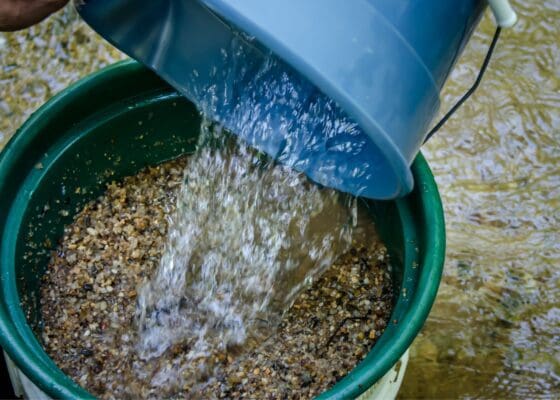
- Green’s Farm, Roxbury: Located in the picturesque hills of Roxbury, this site is famous for its garnet and tourmaline. Typically open from May to October, there’s a nominal fee for a day’s dig. Always call ahead for operating hours as they may vary.
- Branchville Mine: Nestled in the southwestern part of Connecticut, Branchville Mine is renowned for its tri-colored tourmalines and beautiful beryl. It operates mainly during the summer months, from June to September, with a small fee granting access to its mineral-rich grounds.
- Strickland Quarry, Portland: A hotspot for garnets and beryl, this quarry is accessible year-round. Entry fees vary based on mining activity, so it’s advisable to check beforehand.
- Old Mine Park, Trumbull: This site offers not only mining opportunities but also historical insights. Open from dawn to dusk, there’s no entry fee, but it’s wise to check local regulations before any gem hunting.
- Haddam Neck, Haddam: With a blend of garnets, tourmalines, and quartz varieties, this locale is a gem hunter’s delight. Operating mainly during the warmer months, there’s a modest fee for entry.
- Tunnel Road, Washington: A lesser-known site, but for the dedicated prospector, it offers rewards in the form of beryl and quartz. Access is free but always respect the land and its rules.
- Bristol Gem and Mineral Club Mines: This club offers exclusive trips to members for unique mining experiences in the state. Membership fees apply, and operating hours depend on club schedules.
- Farmington River, Barkhamsted: Flowing through picturesque landscapes, this river is a source of diverse minerals. While there’s no entry fee, always ensure you’re not trespassing on private property.
- Lime Rock Park, Lakeville: Famous for its mica, quartz, and even the occasional garnet, this park is open from April to November. There’s no mining fee, but donations are welcome.
- Godomsky’s Feldspar Mine, Litchfield: While feldspar is the primary draw, the site also yields mica and quartz. It’s operational mainly from May to October. A small fee grants you access to its mineral-rich soil.
Before heading out on your gem-hunting journey, always remember to check specific regulations, get permissions where necessary, and respect both the environment and private properties. Happy mining!
History of Gem Mining in Connecticut
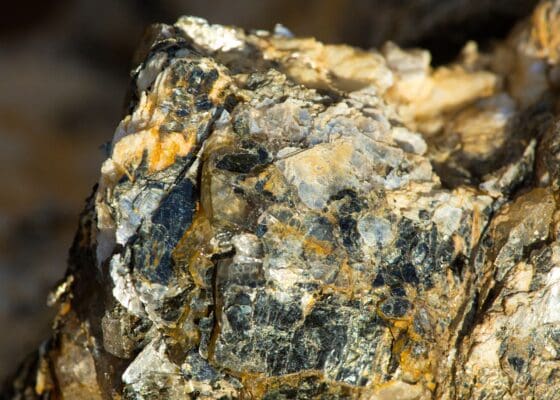
The history of gem mining in Connecticut is as layered and vibrant as the minerals hidden beneath its soils. Long before the onset of commercial mining and European settlers arriving at its shores, indigenous communities recognized the state’s rich mineralogical value. Native American tribes, notably the Pequots and Mohegans, extracted Connecticut’s garnets to craft ornamental jewelry and amulets, which they believed held spiritual powers. These tribes were likely among the state’s first miners, practicing sustainable mining and ensuring harmony with nature.
The state’s gem and mineral activity began to gain prominence in the 18th and 19th centuries. As the U.S. transitioned from an agrarian economy to one that was more industrially inclined, Connecticut saw a surge in mining operations. This was further driven by a rise in the national and international demand for gemstones and minerals. Garnet, for instance, not only became a popular gemstone but was also sought after for its industrial uses as an abrasive.
The late 19th century brought about a particularly interesting phase in Connecticut’s mining history, marked by the discovery of Branchville Mine’s tri-colored tourmaline. This find catapulted Connecticut into the international limelight, attracting gem enthusiasts, collectors, and scholars to explore and study the state’s mineral diversity.
Connecticut’s varied geology also played a vital role in shaping its mining narrative. The state’s metamorphic rocks, formed under extreme conditions, fostered the creation of distinct minerals. Over millions of years, the collision of tectonic plates, volcanic activity, and erosional processes contributed to the formation of the state’s mineral wealth.
However, as mining became more intensive, the need for sustainable practices and preservation of Connecticut’s natural beauty gained attention. Conservation efforts and sustainable mining became more prevalent in the 20th century, ensuring that Connecticut’s gem mining legacy could be enjoyed by future generations.
Today, while large-scale commercial mining has dwindled, hobbyist prospectors and enthusiasts continue to explore Connecticut’s terrains. The allure of unearthing a hidden gem, coupled with the stories of the past, make gem hunting in Connecticut an enriching journey through time.
Gem Mining Regulations in Connecticut


In Connecticut, as in many states, the allure of gem hunting goes hand in hand with the responsibility to both the environment and fellow citizens. Connecticut’s gem mining regulations have evolved over the years to strike a balance between the state’s rich mining tradition and the preservation of its natural heritage.
- Land Ownership: Most essential to understand is that gem mining activities are determined by land ownership. Public lands may have different rules than private ones. Always seek permission before mining on private land. Trespassing not only jeopardizes the gem hunter’s standing but could potentially harm the reputation of the wider gem-hunting community.
- Environmental Considerations: Connecticut places a high value on environmental preservation. Diggers must refrain from using heavy machinery and tools that could disturb the ecosystem. Moreover, after a gem hunt, it is mandatory to return the site to its original state as much as possible, filling in any holes and cleaning up any debris.
- Safety Regulations: While gem mining is a recreational activity, safety is paramount. Some regions in Connecticut may have abandoned mines that are off-limits due to safety concerns. It’s vital to respect these boundaries to avoid unnecessary risks. Furthermore, wearing the appropriate safety gear, like helmets and gloves, is always encouraged.
- Collecting Limits: Certain public lands may have restrictions on the quantity of minerals or gemstones that can be collected in a single visit. These limits ensure that there’s a continued abundance of minerals for future generations of enthusiasts. Always check local regulations before embarking on a hunt.
- Commercial vs. Personal Use: While many might mine for personal joy or academic reasons, commercial mining is a different ballgame altogether. If you intend to sell or trade the gems you find, you may be subject to additional rules or permits, especially if the scale of the operation exceeds personal use.
- Protected Sites: Connecticut is home to several protected sites, be they historical, environmental, or cultural. It’s absolutely forbidden to mine or extract minerals from these sites. Preserving these treasures is crucial for the state’s legacy and the education of future generations.
- Engagement with Local Clubs: Connecticut boasts several gem and mineral clubs. These organizations often engage with the state government, ensuring that the rules benefit both the environment and the enthusiasts. Being a member or maintaining a connection with these clubs can provide firsthand updates on any changes in the regulations.
In conclusion, while the regulations may seem intricate, they serve a purpose. They ensure that the joy of gem hunting in Connecticut remains an ecologically sound, safe, and sustainable practice for all. Prospective miners should always educate themselves on the latest regulations, fostering a harmonious relationship with the land they treasure.
Necessary Tools and Equipment for Gem Mining in Connecticut
Gem mining in Connecticut, like any specialized hobby, requires an arsenal of tools tailored to the state’s specific geological makeup and the varying nature of its mines. Whether you’re sifting through riverbanks or chipping away at rocky outcrops, having the right tools enhances your chances of success and ensures your safety.
1. Screening and Classifying Tools: Reveal those hidden treasures!
Description: When working near water sources, sieves help in sifting through the soil, separating larger rocks and hopefully revealing gems. Having a set of screens with various mesh sizes aids in sorting and identifying finds.


🛒 Explore Top Screening Sets on Amazon
2. Shovels and Trowels: Digging deep or just scratching the surface?
Description: For softer grounds, especially near riverbeds, a sturdy shovel is crucial for digging, while a trowel helps in delicate extractions without damaging the gem.


🛒 Find Quality Shovels and Trowels on Amazon
3. Picks and Hammers: The backbone of any gem hunting endeavor.
Description: A rock hammer, with its flat and pointed ends, is invaluable for breaking apart rock formations and exposing hidden gems. A pick can assist in harder terrains, helping to dislodge rocks or create an entry point.


🛒 Check Out Best Picks and Hammers on Amazon
4. Buckets: Your trusted companion for carrying treasures.
Description: Great for transporting soil or safeguarding your finds. Durability is key.
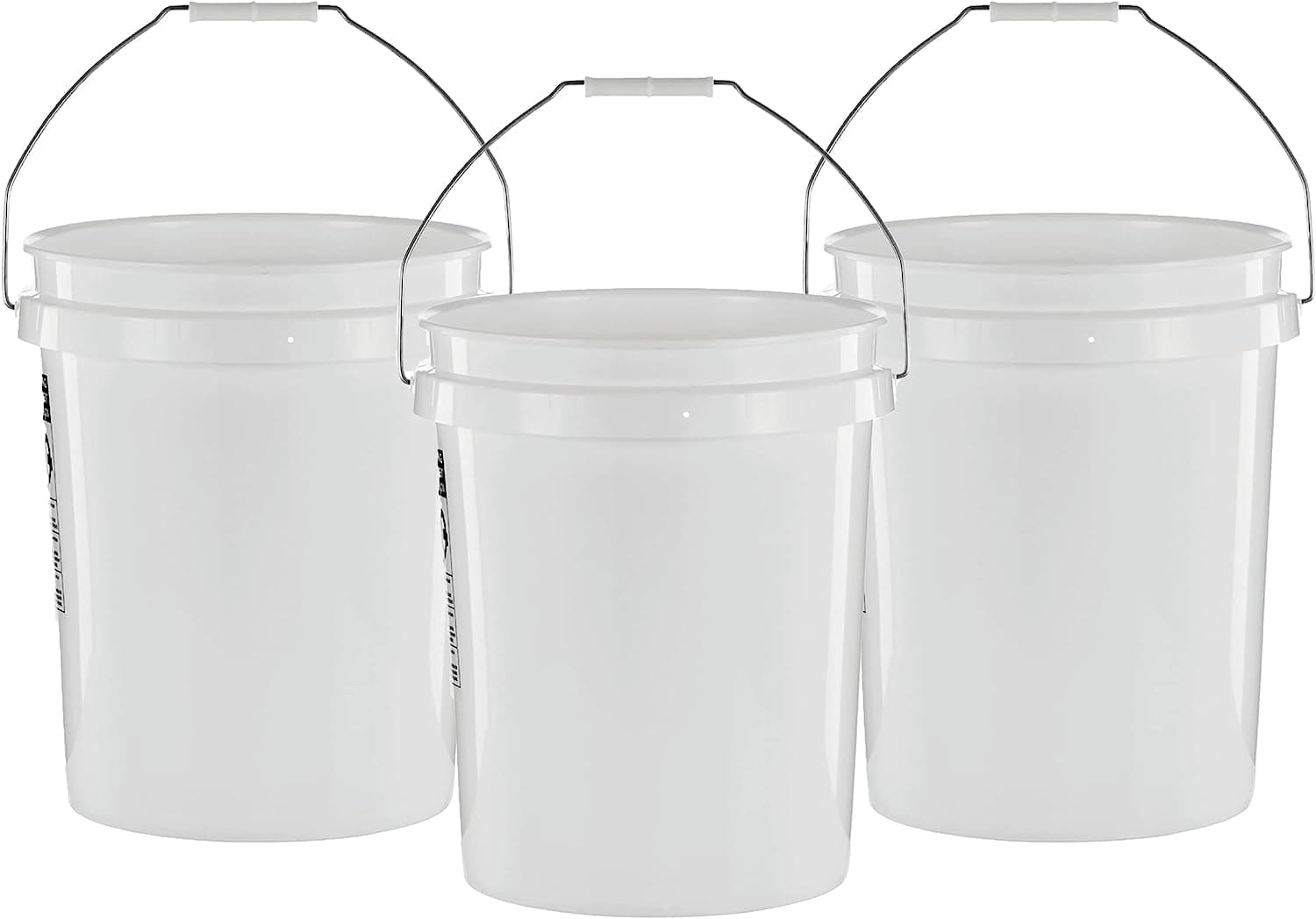

🛒 Shop for Reliable Buckets on Amazon
5. Magnifying Glass: Every detail counts!
Description: Some gems or minerals can be quite small or require closer examination to determine their value. A good magnifying glass or jeweler’s loupe provides this clarity.


🛒 Grab Your Magnifying Glass on Amazon
6. Guidebooks and Field Guides: Knowledge at your fingertips.
Description: A gem and mineral guidebook specific to Connecticut can be invaluable. Not only does it help in identifying finds, but it often provides insights into specific geological formations, increasing your chances of a successful hunt.


🛒 Discover the Best Field Guides on Amazon
7. Containers and Bags: Organize, store, and flaunt your finds.
Description: As you gather gemstones, having durable bags or buckets ensures safe storage. Labeling them based on location or type of stone can be helpful for post-trip analysis.


🛒 Shop for Storage Solutions on Amazon
8. First Aid Kit: Better safe than sorry!
Description: While we hope it’s never needed, a basic first aid kit is essential. It should contain band-aids, antiseptics, tweezers, and other fundamental supplies.


🛒 Secure Your First Aid Kit on Amazon
Arming yourself with these tools and equipment ensures not only a fruitful gem-hunting experience in Connecticut but also a safe and memorable one. Remember, the tools are only as good as the hands that wield them, so take the time to familiarize yourself with their proper usage before embarking on your mining adventure.
Tips and Tricks for Successful Gem Mining in Connecticut


Gem hunting is as much an art as it is a science. In a state as geologically diverse as Connecticut, approaching the endeavor with a few insider tips can elevate your experience from a simple day out to a genuinely rewarding adventure. Here are some insights to optimize your gem mining expedition in the Constitution State:
- Research is Key: Before venturing out, dedicate time to researching the specific areas you wish to explore. Historical records, geological surveys, and testimonials from fellow miners can offer invaluable hints about potential hotspots.
- Seasonal Considerations: Spring and early summer are often the best times for gem hunting in Connecticut. The melting snow and spring rains can wash away topsoil, revealing hidden gemstones, especially near riverbeds.
- Connect with Local Clubs: Joining a local gem and mineral club can be immensely beneficial. These groups often conduct guided excursions, where novice miners can learn hands-on from seasoned experts.
- Look for Quartz: In Connecticut, areas rich in quartz often hint at the presence of other valuable minerals. Quartz veins can sometimes be associated with deposits of garnet, tourmaline, and other desirable gemstones.
- Mind the Mica: Shiny sheets of mica, which are relatively common in Connecticut, can sometimes be mistaken for valuable gems. While beautiful, they’re not as prized as other finds but can indicate the vicinity of other minerals.
- Start Early: Particularly during the summer, it’s beneficial to start your hunt early in the morning. Not only do you avoid the midday heat, but the morning sun’s angle can illuminate and accentuate gemstones’ shimmer, making them easier to spot.
- Respect the Land: Always fill in holes you dig and avoid disturbing local flora and fauna. Practicing sustainable mining ensures these sites remain accessible and enjoyable for everyone.
- Hydration and Snacks: Gem hunting can be physically demanding. Always carry enough water to stay hydrated, and energy-boosting snacks to keep your stamina up.
- Networking: Interacting with fellow gem enthusiasts can be invaluable. Sharing findings, discussing locations, and collaborating on techniques can drastically increase your success rate.
- Patience and Persistence: Perhaps the most crucial tip is to be patient. Gem hunting is as much about enjoying the process as it is about the find. While you might not always discover a hidden gem, the experience, the connection to nature, and the thrill of the hunt make every expedition worthwhile.
Embarking on a gem hunting journey in Connecticut equipped with these tips not only increases your chance of a fruitful find but also ensures a richer, more immersive experience in the heart of nature.
Handling Your Gemstone Finds
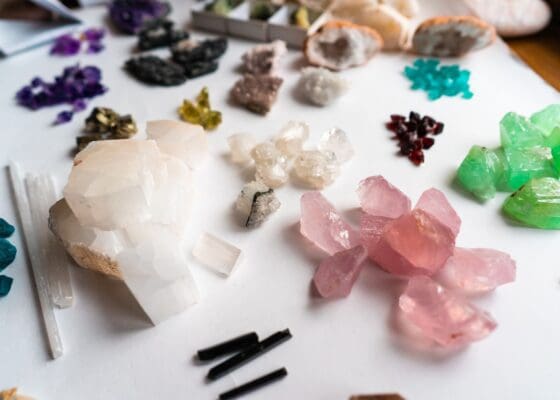

Once you’ve had a successful day of gem hunting in Connecticut, you’re left with the thrilling, yet often daunting task of determining what to do with your finds. From the untrained eye, a raw gemstone may look like an ordinary rock. With proper care, however, these seemingly mundane stones can reveal their hidden beauty and value. Here are some steps and tips to guide you in handling your newly discovered treasures:
- Initial Cleaning: Start by gently washing your finds with water to remove any loose dirt. Using a soft-bristled brush, like an old toothbrush, can help remove stubborn dirt without scratching the gemstone.
- Classification: Categorize your stones based on their apparent type, color, or location found. Having a field guide or reference book specific to Connecticut can aid in preliminary identification.
- Document: Before diving into deeper cleaning or processing, photograph your finds. Keeping a record of the gem’s original state can be invaluable for future reference or if you decide to showcase your mining journey.
- Advanced Cleaning: For minerals with hardened mud or iron staining, a solution of oxalic acid can be used. However, ensure you know the mineral you’re cleaning, as some gems can be damaged by chemicals.
- Storing: Store each gemstone separately in a soft pouch or a padded box to prevent scratching. Labeling each pouch with the gem’s name and location found can help in organization and future identification.
- Lapidary Services: If you believe you have a particularly valuable or beautiful stone, consider seeking lapidary services. These experts can cut, shape, and polish gemstones, enhancing their natural beauty.
- Appraisals: For potentially valuable finds, getting an expert appraisal can be worth the investment. Not only will you discover your gem’s market value, but you’ll also gain a certificate of authenticity.
- Learn Basic Gemology: Investing in a basic gemology course or attending workshops can give you insights into grading, identifying inclusions, and understanding the overall quality of your gems.
- Display: Showcase your finds! From simple display boxes to elaborate showcases, sharing your gem hunting successes can be a conversation starter and a testament to your adventures.
- Stay Updated: The world of gemstones is vast, and new identification techniques, treatments, and care methods emerge regularly. Joining gem and mineral societies or subscribing to gem-related publications can keep you informed.
Remember, the journey from unearthing a gem to showcasing its brilliance is a process requiring patience, care, and continuous learning. Every gemstone, no matter its market value, holds a unique story – of geological marvel, historical significance, and personal adventure. Cherish and honor these narratives as you handle your Connecticut finds.
Famous Gemstone Finds in Connecticut
Connecticut, steeped in geological history and rich with mineral deposits, has witnessed some remarkable gemstone discoveries over the years. These famous finds have not only added to the allure of gem hunting in the state but also solidified Connecticut’s position in the annals of mineralogical history.
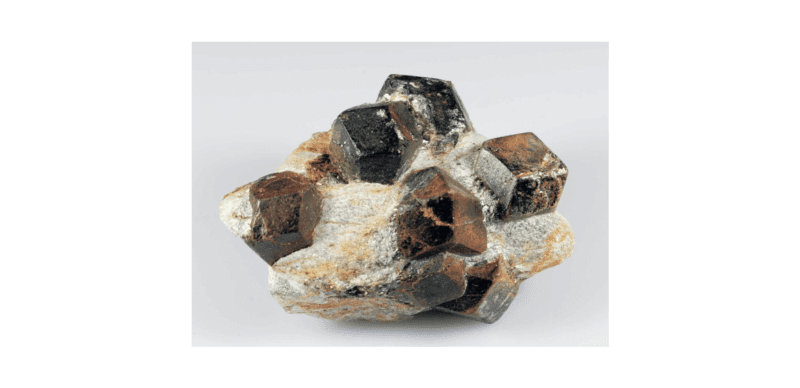

- The Roxbury Garnets: Among the most celebrated gem finds in Connecticut are the garnets from Roxbury. Characterized by their deep, lustrous red hue, these garnets have made a significant mark in the gem-collecting community. Some specimens have been found to weigh several pounds, with crystal formations that are a wonder to behold.
- Bristol Aquamarine: In the late 1800s, a significant discovery of aquamarine was made near Bristol. These blue-green beryl crystals were noteworthy not just for their size but also for their exceptional clarity, rivaling some of the best aquamarines found worldwide.
- Trumbull’s Tourmaline: The town of Trumbull was once a hotspot for black tourmaline, or schorl. Some of these specimens, with their elongated crystals and striated patterns, are now displayed in prominent museums, standing testament to the mineral diversity of the state.
- East Hampton’s Amethyst: East Hampton once yielded a massive amethyst geode, with the deep purple crystals arranged in a mesmerizing cluster. The discovery made headlines, drawing gem enthusiasts and geologists alike to marvel at its beauty.
- Hiddenite of Newtown: A variant of the green spodumene, hiddenite is a rare gemstone. Connecticut’s Newtown once surprised gem hunters with a find of this elusive gem, putting the state on the map for this particular discovery.
- Chrysoberyl from Haddam: The yellow-green chrysoberyl, often mistaken for peridot, was historically mined in Haddam. Some of the most pristine samples of this gemstone, exhibiting a unique cat’s eye effect, hail from this region.
- Gems of the Yale Peabody Museum: While not all the gemstones at the Yale Peabody Museum in New Haven were found in Connecticut, the collection showcases some of the state’s most prized specimens, each with a backstory that adds to the rich tapestry of Connecticut’s mining history.
- Modern-day Finds: While the grand days of gem discoveries might seem like tales of the past, every so often, a hobbyist unearths a gem that stirs excitement in the community – be it a perfectly formed quartz crystal, a rare mineral specimen, or a vividly colored gemstone.
Connecticut’s soil has generously offered a treasure trove of gemstones over the centuries, and these famous finds serve as inspiring reminders of the geological wonders beneath our feet. They beckon hobbyists and professionals alike to embark on their own quests, hoping to etch their names in the ever-evolving story of Connecticut’s mineralogical marvels.
Additional Gem Mining Opportunities
The allure of gem mining isn’t restricted solely to Connecticut. If you’ve caught the gem-hunting bug, you’ll be thrilled to learn that many of Connecticut’s neighboring states also offer abundant opportunities for mineral enthusiasts. Here’s a brief rundown of what you can expect:
- New York Gem Mining: Just to the west, New York boasts a diverse range of minerals. Herkimer Diamonds, actually double-terminated quartz crystals, are particularly sought after by collectors and are unique to the state.
- Rhode Island Gem Mining: To the east, Rhode Island might be small, but it’s rich in tourmalines, particularly in areas around Hope Valley.
- Massachusetts Gem Mining: Located to the north, Massachusetts is renowned for its diverse mineral specimens, including topaz, beryl, and various quartz varieties.
- New Jersey Gem Mining: Slightly southwest of Connecticut, New Jersey offers gem hunters the chance to find prehnite, garnet, and the ever-elusive zeolites.
Each of these states brings its unique geological makeup, offering varied and exciting opportunities for those looking to extend their gem mining adventures beyond Connecticut’s borders.
Unearth the best gem mining spots and tips with our Gem Mining Near Me guide.
Gem Mining Magic & A Home Adventure
Connecticut, with its rich geological tapestry and historical significance, offers a fascinating and rewarding landscape for gem enthusiasts. The thrill of discovery, the connection to Earth’s millennia-old secrets, and the tangible reward of unearthing a shimmering gem encapsulate an experience unlike any other. The state beckons both novices and seasoned hunters to traverse its diverse terrains in the hopes of capturing a piece of its mineralogical wonder.
Yet, for those who might not have the luxury to travel, face weather challenges, or deal with physical constraints, the allure of gem hunting need not be out of reach. Introducing the Gem Mining Kit – a curated collection of mineral-rich soil and raw gemstones, designed to recreate the magic of a mining expedition in the comfort of your home. Whether you’re diving into Connecticut’s natural wonders or sifting through a home gem kit, the spirit of discovery remains undiminished, waiting to captivate your imagination.


